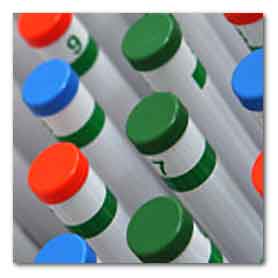|
Everyone has heard of common germs like E.coli or
influenza, but what about Streptobacillus
moniliformis or Capnocytophaga? If not treated
quickly, both can kill people within days. But they
are so rare that doctors and labs probably have
never seen them and may mistake them for more common
diseases like meningitis.
Enter MicrobeNet, an innovative online tool designed
by the Centers for Disease Control and Prevention
(CDC) that, since 2013, has helped laboratorians and
doctors get the information they need to accurately
diagnose causes of disease faster and save lives.

MicrobeNet is a free online database of rare and
unusual pathogens that is curated by CDC experts.
MicrobeNet provides laboratorians with unprecedented
access to CDC's virtual microbe library of more than
2,400 rare and emerging infectious bacteria and
fungi at no cost.
CDC launched MicrobeNet in 2013 with a goal of
helping hospitals and public health laboratories
improve reference diagnostics and speed up species
identification, regardless of the level of
technology of the laboratory.
MicrobeNet provides detailed information on hundreds
of species of rare and emerging bacteria and fungi.
For example:
-
Genetic sequence information
-
Biochemical characterization (what enzymes and
nutrients does the pathogen use)
-
Morphological characterization (how does the
pathogen grow: size, shape, and color of
colonies)
-
Antibiotic resistance profiles.
In
partnership with Bruker Corp., CDC has recently
added a new module to MicrobeNet that allows labs to
search the protein signatures of the bacteria and
compare them to the rare pathogens in CDC's
MicrobeNet library by using Bruker's MALDI Biotyper
systems. Using MALDI to test is extremely fast and
cheaper to run than many other types of testing,
making the technology increasingly popular among
labs.
The
new MicrobeNet module will be immediately available
to laboratorians and clinicians using the Bruker
system in labs nationwide. Until the addition of the
MALDI library, MicrobeNet offered two ways to search
pathogens: by DNA sequence or biochemical tests
(chemical reactions caused by the bacteria).
MicrobeNet can dramatically improve the health of
people in the United States and around the world by
cutting the time for testing from about a week to a
few hours.
In
addition to being faster, using the MALDI module in
MicrobeNet offers dramatic cost savings for clinical
and public health laboratories because they no
longer will need to develop their own pathogen
libraries. These laboratories will also have the
assurance that their information has been confirmed
by CDC experts. In addition, for many germs,
MicrobeNet provides doctors with information about
which antibiotics the bacteria are resistant to. By
quickly identifying the species of bacteria, lab
staff can pass this critical information to the
doctors who can use it to help make a diagnosis and
select the right treatment, thus reducing the risk
of their patients developing drug-resistant
infections.
The
database includes standardized procedures for
growing pathogens and for conducting diagnostic
assays. MicrobeNet can also be used as an
interactive teaching tool in microbiology
classrooms.
Users
can search the database in three ways:
-
Search by genetic sequence using 16S ribosomal
RNA sequencing, which is a well-established
method to compare and identify bacteria.
-
Search by phenotype based on biochemical
analysis (more than 190 tests) and morphological
characterization (size, shape, and color of
colonies) as well as antibiotic resistance
profiles.
-
Search by protein profile using protein profiles
generated by MALDI-TOF MS (matrix-assisted laser
desorption/ionization mass spectrometry)
instruments.
For
more information
What Is MicrobeNet?
Link...
MicrobeNet
Link...
MDN |